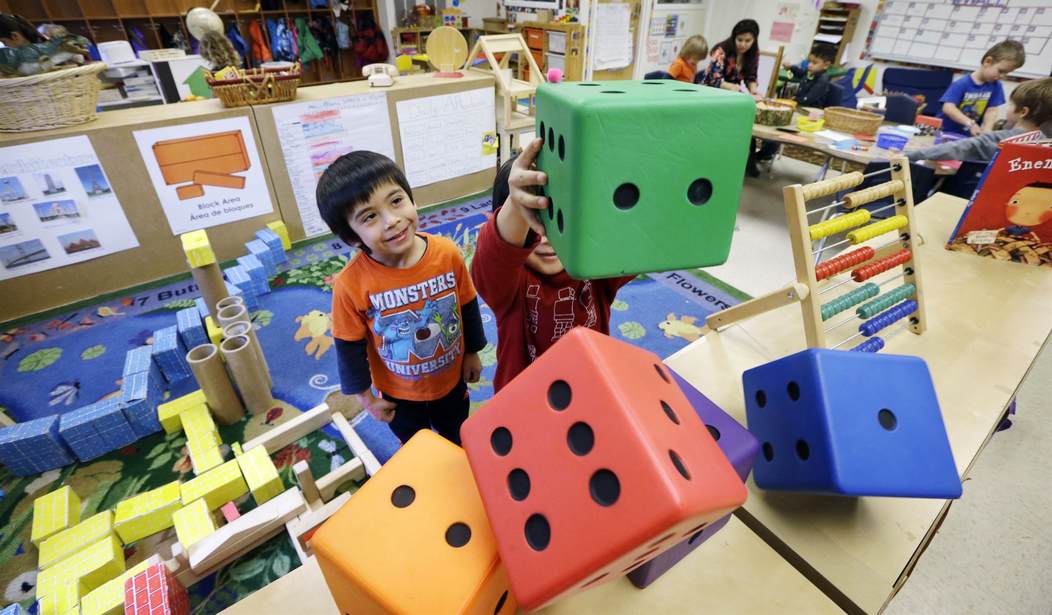Do you ever wonder how the United States ran up a $32 trillion debt? Waste and fraud certainly account for a lot of it. But there’s also “mission creep” by the federal government where, with seemingly the best of intentions, the government “inadvertently” falls into a situation where it becomes impossible to cut a program because it has taken on a life of its own.
Almost every federal program has its own lobby. Even if there’s no business or industry to back its continued existence, there is inevitably support for the continued funding of a program from bureaucrats and members of Congress. Instead of “sunsetting” a program, it rises like a zombie from the ashes to live on, sucking taxpayers dry and becoming the closest thing to immortality known to man.
There’s a lot of that going around today with pandemic spending. Many of those programs are running out of money, and without a permanent infusion of cash, their clients will be forced to do without.
One such program is for daycare centers subsidized by $24 billion in pandemic relief funds. With those funds drying up, 70,000 childcare programs are in danger of being canceled, with millions of parents — mostly mothers — stuck without someone to watch the kids.
It should be noted at this point that “daycare for all” has been a part of the Democratic Party platform since forever. The Democrats have teed up a $16 billion daycare bill that currently doesn’t have a snowball’s chance in hell of passing. But now, with stimulus funds running out, Democrats have a ready-made excuse to keep the gravy train going.
“It isn’t just individual children or parents that will be impacted, it’s the economy as a whole,” said Julie Kashen, a senior fellow at the liberal think tank the Century Foundation, told the Washington Post. “When more than 3 million children lose care, that means all of those parents are going to have to figure out something else or reduce their work hours or leave their jobs altogether.”
The expiration of federal funding comes at a precarious time for the U.S. economy, which is already slowing after a period of brisk post-pandemic growth. Job openings are at a two-year low, home sales are declining and more Americans are missing payments on car loans and credit cards. And although overall price growth is stabilizing, child-care costs have risen faster than inflation for five straight months. Experts say day-care fees, which are already among the highest in the world, are expected to rise evenhigher in coming months as supply dwindles.
“The pandemic laid bare and exacerbated what was already a tenuous situation in child care,” said Melissa Boteach, vice president of income security and child care at the National Women’s Law Center. “The American Rescue Plan was a lifeline. And when this money dries up, it will be a slow roll toward making the country’s child-care deserts even drier.”
The drumbeat is getting louder, and cries for help are more insistent. Congress needs to “do something about the problem,” we’re told. What is now a $16 billion problem is likely to morph into another entitlement boondoggle with layers upon layers of bureaucracy leading to, eventually, a cabinet seat for the “Child Care Czar.”
Economists say the impending rollbacks could deal a disproportionate blow to mothers, who have returned to work at record rates since the pandemic. The share of women in their prime working years in the labor force, at more than 77 percent, is near an all-time high and has helped prop up much of the economy’s recent strength. But child-care disruptions could threaten those gains and lead to worsening worker shortages in industries such as nursing, teaching and hospitality, which have all struggled to refill their ranks since the start of the pandemic.
With so many in dire need, the government is going to be forced to act. The sad part is that there are alternatives to federally subsidized daycare. States partnering with local businesses could ease the crisis substantially. Indeed, it’s becoming more common for businesses to supply daycare on-site or pay for employee childcare. With the labor market so tight, this would seem to be a benefit whose time has come.
Unfortunately, the government will want to monopolize daycare for itself. And when it does, it will — like every other federal program — find a way to grow the childcare benefit into a gargantuan program with its own huge lobby of industry, bureaucrats, and congressmen.










